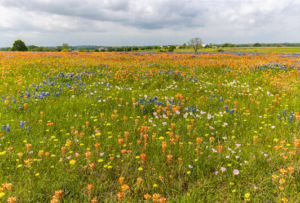When undertaking a reclamation, right of way (ROW), or construction project, not all seed will meet your goal. The wrong seed or cheapest seed fails to address the biggest concerns during and after construction :
- Erosion control
- Hydrology restoration of the site
- Re-establishment of vegetation
The effects of subpar ROW seed result in wasted time and increased costs, as well as long-lasting effects over the life of the project. The first and most critical step in the reclamation revegetation process is dirt work and soil stabilization. It’s easy for reclamation seed blend selection and application to be an afterthought, as the cost involved to revegetate a project is relatively small compared with other expenses. However, improper planning and attempts to cut corners on ROW seed could result in the high cost of seeing effort, dollars and time spent on the project washed or blown away.
That’s why it is vital to purchase high-quality reclamation seed to ensure establishment, especially in adverse conditions. It is also extremely important to purchase a blend of species that are adapted to the soil types present, climatic conditions, and the goals for the project. The reclamation revegetation project — including re-planting seed — may have to be repeated without the use of:
- High-quality seed adapted to the site
- Proper seeding techniques and equipment
- Correct application timing
Using the right ROW seed blends from the start means more of the operation and maintenance budget can be used for vegetation management. Without quality reclamation seed, poor stands of the vegetation you are trying to establish leave room for woody plants or invasive/noxious species to invade. Many times, non-native species are selected because they’re cheap and easy to establish. These same characteristics have led them to become invasive/noxious in some areas. Dealing with invasive/noxious species or woody plant encroachment is expensive and will become a yearly part of the management plan once they are able to establish.
Revegetating a reclamation site is, admittedly, a small piece of an entire project. However, failing to recognize the importance of quality seed necessary for reclamation may cut corners initially, but add up to costly mistakes throughout the life of the project and for years to come.



